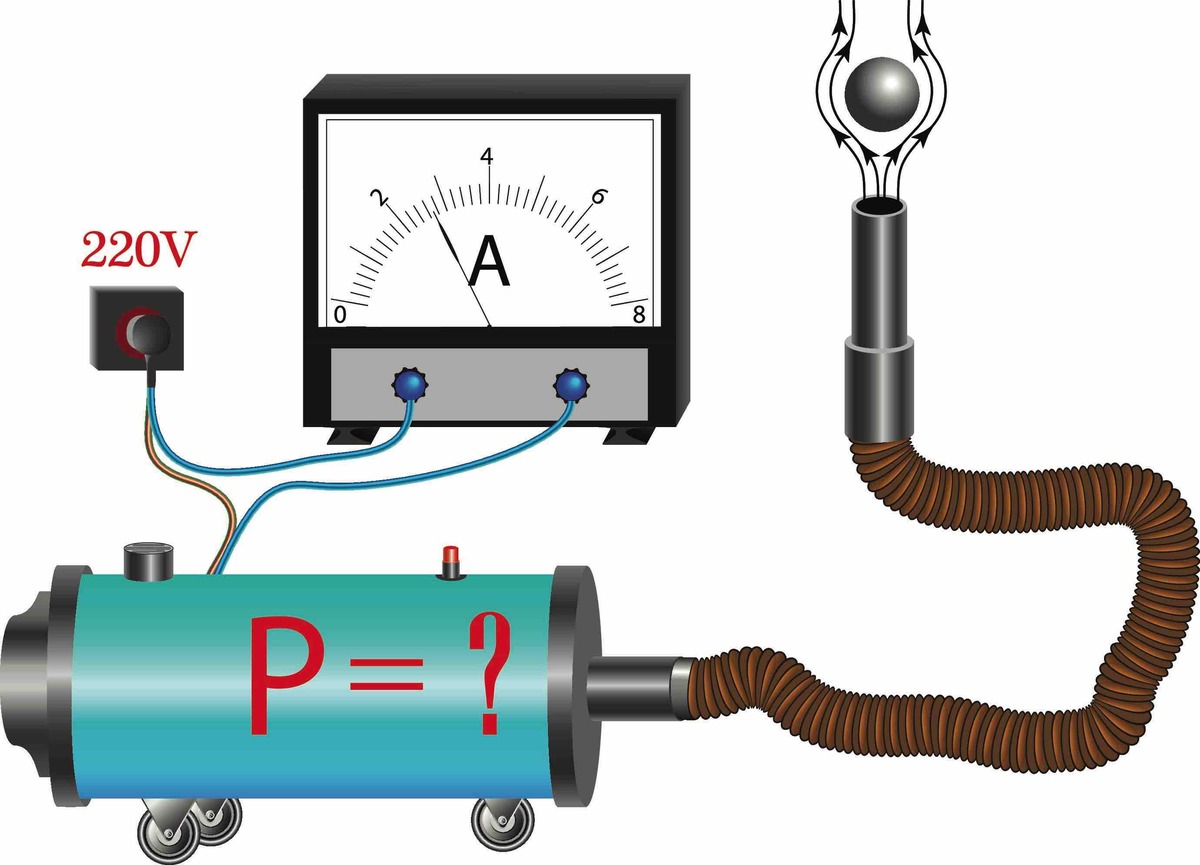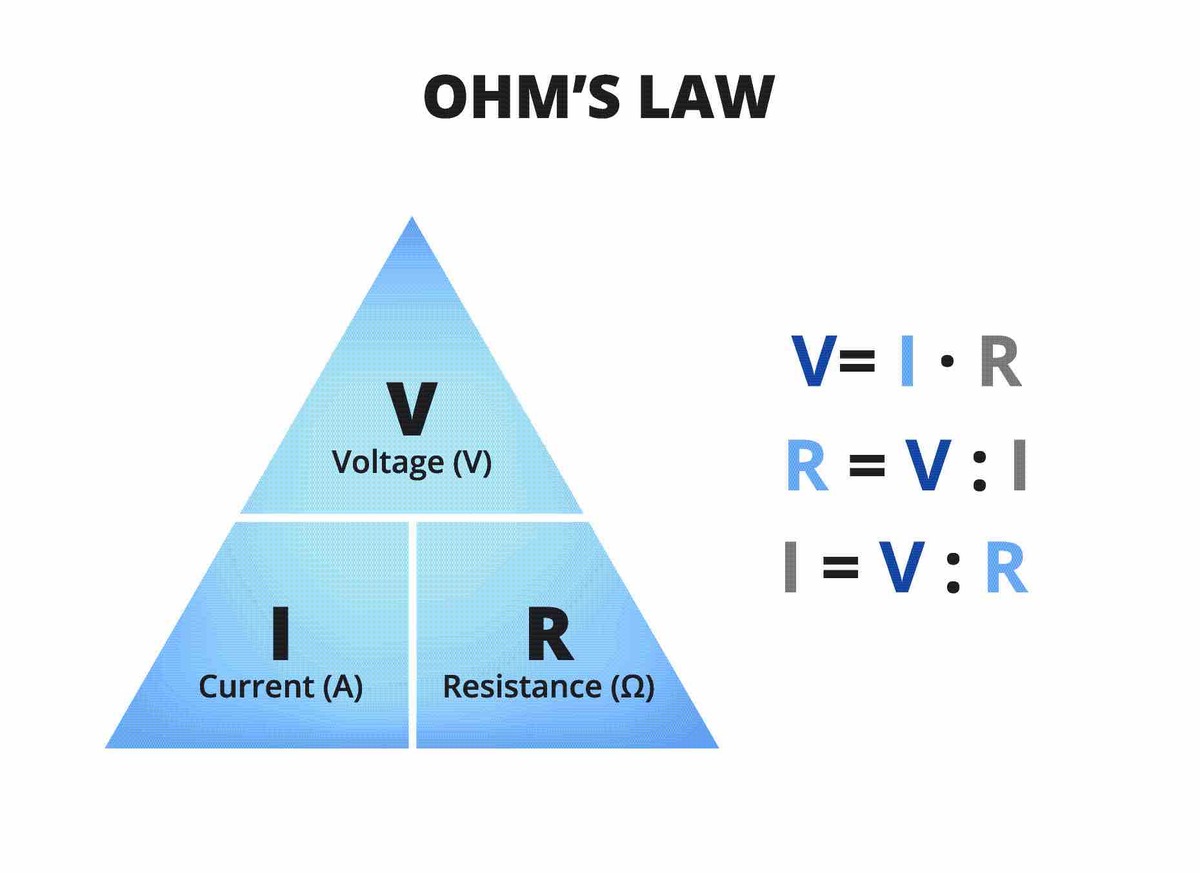Ohm’s Law In Vaping: The Science Behind Vaping Safely

Ohm’s law is a law used to calculate the relationship between the three main elements that make up an electrical circuit, mainly current, resistance and voltage. Ohm’s law is important for vapers. It helps them figure out current and voltage for vapes that do not have the electronics to detect them, like mechanical mods. Regulated mods have the sensors and chips to calculate the resistance of a coil build or the voltage of a pair of batteries. But mech mods do not, which is why Ohm’s law is vital to safe vaping.
Table of Contents
- What is Ohm’s Law?
- What is the Importance of Vaping?
- The Ohm Triangle
- Making the Calculations
- Interpreting the Results
- FAQ
- Closing Thoughts
Table of Contents
An Ohm's Law Explainer
Ohm’s law is a basic formula of electrical engineering that lets people discover the variables of an electrical circuit, like current and voltage.

It is best expressed mathematically as:
V = IR
V represents the Voltage, I represents the Current, and R stands for Resistance. The formula above is for discovering the voltage of a circuit by multiplying the current by the resistance. Still, as long as you have two of any of the variables, you can calculate the third one. So, for example, if you only have the voltage and resistance, you can calculate the current. If you have the voltage and current, you can calculate the resistance.
Ohm’s law is a basic formula of electrical engineering that lets people discover the variables of an electrical circuit, like current and voltage.

It is best expressed mathematically as:
V = IR
V represents the Voltage, I represents the Current, and R stands for Resistance. The formula above is for discovering the voltage of a circuit by multiplying the current by the resistance. Still, as long as you have two of any of the variables, you can calculate the third one. So, for example, if you only have the voltage and resistance, you can calculate the current. If you have the voltage and current, you can calculate the resistance.
The Relationship Between Ohm's Law and Vaping
Ohm’s law is important in vaping because a mod is basically an electrical circuit with a power source (battery). It produces a current and has something that resists that current (the coils in your atomizer). However, ohms and Ohm’s law do not figure into all types of circuits or vaping devices.
Vape mods, all regulated mods, have electronics and sensors to automatically determine the resistance of a coil build when attached to the device. Regulated mods also have circuit boards and chips that help regulate the power flow from a battery to a coil setup. But mechanical mods work on the unregulated power of a single battery. So they require users to calculate voltage and resistance to ensure they are safe vaping.
How Does Ohm’s Law Keep Vapers Safe?
Using Ohm’s law helps vapers calculate many things like the amount of current flowing through a circuit or coil build, whether the coil builds they are using can resist the current of the batteries, and whether the batteries will stay within their amperage limits with a particular coil build.
Ohm’s law, put simply, is like a guardrail or fence that keeps a car (or a vape, in this instance) from losing control and going off the road (or exploding, in the case of vaping). Vapers use Ohm’s law to figure out whether they are not pushing their device, coils, and batteries beyond their limits, which, if they are being forced, could lead to catastrophe.
Ohm’s law is important in vaping because a mod is basically an electrical circuit with a power source (battery). It produces a current and has something that resists that current (the coils in your atomizer). However, ohms and Ohm’s law do not figure into all types of circuits or vaping devices.
Vape mods, all regulated mods, have electronics and sensors to automatically determine the resistance of a coil build when attached to the device. Regulated mods also have circuit boards and chips that help regulate the power flow from a battery to a coil setup. But mechanical mods work on the unregulated power of a single battery. So they require users to calculate voltage and resistance to ensure they are safe vaping.
How Does Ohm’s Law Keep Vapers Safe?
Using Ohm’s law helps vapers calculate many things like the amount of current flowing through a circuit or coil build, whether the coil builds they are using can resist the current of the batteries, and whether the batteries will stay within their amperage limits with a particular coil build.
Ohm’s law, put simply, is like a guardrail or fence that keeps a car (or a vape, in this instance) from losing control and going off the road (or exploding, in the case of vaping). Vapers use Ohm’s law to figure out whether they are not pushing their device, coils, and batteries beyond their limits, which, if they are being forced, could lead to catastrophe.
The Ohm Pyramid

The Ohm Pyramid or “Triangle” refers to how best to understand the importance of each variable and their relationship to each other. The best way to understand the Ohm triangle is to visualize the letters representing each variable (V, I, R) arranged in a triangle, with V on top and I and R on the bottom.
Leaving the Triangle in this arrangement is how you calculate the Voltage of a circuit (V = I/R). But if you cross out one of the variables, signifying that as the variable you want to calculate, you can discover the formula for what you want to do. Taking out the R (resistance), for example, helps you see that you need to divide the Voltage (V) by the Current (I), or put another way:
R = V/I
And it goes on for all the other possible combinations and formulas:
I = V/R
But the Triangle does not contain all the possible combinations of calculations possible with these variables. There are other ways to calculate the wattage. For example, a particular device or mechanical mod uses known variables like the current of a circuit or the voltage.

The Ohm Pyramid or “Triangle” refers to how best to understand the importance of each variable and their relationship to each other. The best way to understand the Ohm triangle is to visualize the letters representing each variable (V, I, R) arranged in a triangle, with V on top and I and R on the bottom.
Leaving the Triangle in this arrangement is how you calculate the Voltage of a circuit (V = I/R). But if you cross out one of the variables, signifying that as the variable you want to calculate, you can discover the formula for what you want to do. Taking out the R (resistance), for example, helps you see that you need to divide the Voltage (V) by the Current (I), or put another way:
R = V/I
And it goes on for all the other possible combinations and formulas:
I = V/R
But the Triangle does not contain all the possible combinations of calculations possible with these variables. There are other ways to calculate the wattage. For example, a particular device or mechanical mod uses known variables like the current of a circuit or the voltage.
Making Other Calculations
While the Triangle helps calculate important variables like Resistance, Current, and Voltage, there are other vital figures that vapers need to know to vape safely with a mechanical mod. Wattage is one of the most critical things vapers need to know about a particular battery in an unregulated vaping device. It is not something included in the Ohm triangle.
To calculate the wattage of a coil build, multiply the Current by the Voltage of your circuit:
P (wattage) = I (current) x V (voltage)
While the Triangle helps calculate important variables like Resistance, Current, and Voltage, there are other vital figures that vapers need to know to vape safely with a mechanical mod. Wattage is one of the most critical things vapers need to know about a particular battery in an unregulated vaping device. It is not something included in the Ohm triangle.
To calculate the wattage of a coil build, multiply the Current by the Voltage of your circuit:
P (wattage) = I (current) x V (voltage)
What to Do With Your Results
You may ask yourself, “why am I doing these calculations, and what do these numbers mean?” and you are perfectly right to ask. It’s one thing to be able to calculate the numbers and discover the formula, but it is another to know what to do with the results. Vapers make all these calculations to ensure that they do not exceed the physical limits of the elements involved, mainly the battery and the coils.
In a mech or unregulated mod, there are no circuit boards or electronic sensors to tell you things like the resistance of your coils, the voltage coming from your battery, or the wattage sent to the coils. These things are essential to know. Going over the limits of these elements could lead to disaster.
For example, you need to know the resistance of your coil to safely use a battery with a set amperage limit, like 10A, so you do not go beneath that limit and cause a battery leak. Likewise, knowing the current sent through your coil will help you stay beneath the maximum output of your battery to prevent it from leaking or failing.
You may ask yourself, “why am I doing these calculations, and what do these numbers mean?” and you are perfectly right to ask. It’s one thing to be able to calculate the numbers and discover the formula, but it is another to know what to do with the results. Vapers make all these calculations to ensure that they do not exceed the physical limits of the elements involved, mainly the battery and the coils.
In a mech or unregulated mod, there are no circuit boards or electronic sensors to tell you things like the resistance of your coils, the voltage coming from your battery, or the wattage sent to the coils. These things are essential to know. Going over the limits of these elements could lead to disaster.
For example, you need to know the resistance of your coil to safely use a battery with a set amperage limit, like 10A, so you do not go beneath that limit and cause a battery leak. Likewise, knowing the current sent through your coil will help you stay beneath the maximum output of your battery to prevent it from leaking or failing.
Questions Answered
Are lower ohms better for vaping?
Using a low-resistance or sub-ohm coil has become popular in vaping. The lower the resistance of your coils, the more power passes through them. It leads to bigger and more voluptuous clouds. The lowest resistance of coils is only possible on rebuildable atomizers, where users create their coils and test them to see if their resistance suits the battery they are using.
What are the safest Ohms in a vape?
The safest ohms in vaping depend on other factors like the limits of your battery and its CDR (continuous discharge rating). Also, they do not overpower the resistance of your coils. Of course, you do not want to push the limits of your coils. So it is essential to leave some room between the lowest possible resistance and the highest amount of discharge from your batteries.
What wattage to vape at 0.5 ohms?
To calculate the safest allowable wattage for a 0.5ohm coil build, you must first know the other variables like the current and the voltage. You can calculate the missing variable (Current) by dividing the Resistance/Voltage (0.5/4.2V), which gives you 8.4A. With the Current known, you can multiply the Voltage (4.2V) by the Current (8.4A) to discover the wattage, which is 35.3W.
How to change ohms on vape?
In sub-ohm tanks, the only way to change the resistance of your coils is to replace the coil heads. But the physical way to do this is by changing the wire thickness (gauge) and length of the coil built in your rebuildable atomizer. The thickness and length (wraps) of a coil build mean the electricity takes longer to heat the coils or to travel through them. It leads to a lower or higher resistance, depending on your preference.
Are lower ohms better for vaping?
Using a low-resistance or sub-ohm coil has become popular in vaping. The lower the resistance of your coils, the more power passes through them. It leads to bigger and more voluptuous clouds. The lowest resistance of coils is only possible on rebuildable atomizers, where users create their coils and test them to see if their resistance suits the battery they are using.
What are the safest Ohms in a vape?
The safest ohms in vaping depend on other factors like the limits of your battery and its CDR (continuous discharge rating). Also, they do not overpower the resistance of your coils. Of course, you do not want to push the limits of your coils. So it is essential to leave some room between the lowest possible resistance and the highest amount of discharge from your batteries.
What wattage to vape at 0.5 ohms?
To calculate the safest allowable wattage for a 0.5ohm coil build, you must first know the other variables like the current and the voltage. You can calculate the missing variable (Current) by dividing the Resistance/Voltage (0.5/4.2V), which gives you 8.4A. With the Current known, you can multiply the Voltage (4.2V) by the Current (8.4A) to discover the wattage, which is 35.3W.
How to change ohms on vape?
In sub-ohm tanks, the only way to change the resistance of your coils is to replace the coil heads. But the physical way to do this is by changing the wire thickness (gauge) and length of the coil built in your rebuildable atomizer. The thickness and length (wraps) of a coil build mean the electricity takes longer to heat the coils or to travel through them. It leads to a lower or higher resistance, depending on your preference.
Conclusion: Ohm's Law in Vaping: The Essentials of Battery Safety
Do you want to know more about Ohm’s law and sub-ohm vaping? What else do you want to know about Ohm’s law and battery safety? Let us know in the comments section below.
Ohm’s law applies to vaping because of the electrical elements involved, like batteries and coils. All vaping devices are closed circuits that require a current to flow through a conductor (coils) to produce energy (heat). So, Ohm’s law states that these elements need to be known in relation to one another to prevent a serious accident.
It may seem daunting to new vapers or math and science-adverse people. But a few simple calculations can go a long way to help people prevent accidents. In addition, the promise of bigger clouds and better-tasting vapor pushes many people to vape at sub-ohm resistances or to use mech mods.
If done correctly, sub-ohm vaping with mechanical mods can be a fun and rewarding experience. But only if you apply the rules of Ohm’s laws and understand that it is not so simple. It requires careful calculations and understanding of the limits of the different elements like a battery or coil thickness to be done safely.
Do you want to know more about Ohm’s law and sub-ohm vaping? What else do you want to know about Ohm’s law and battery safety? Let us know in the comments section below.
Ohm’s law applies to vaping because of the electrical elements involved, like batteries and coils. All vaping devices are closed circuits that require a current to flow through a conductor (coils) to produce energy (heat). So, Ohm’s law states that these elements need to be known in relation to one another to prevent a serious accident.
It may seem daunting to new vapers or math and science-adverse people. But a few simple calculations can go a long way to help people prevent accidents. In addition, the promise of bigger clouds and better-tasting vapor pushes many people to vape at sub-ohm resistances or to use mech mods.
If done correctly, sub-ohm vaping with mechanical mods can be a fun and rewarding experience. But only if you apply the rules of Ohm’s laws and understand that it is not so simple. It requires careful calculations and understanding of the limits of the different elements like a battery or coil thickness to be done safely.


Comments
Leave a comment